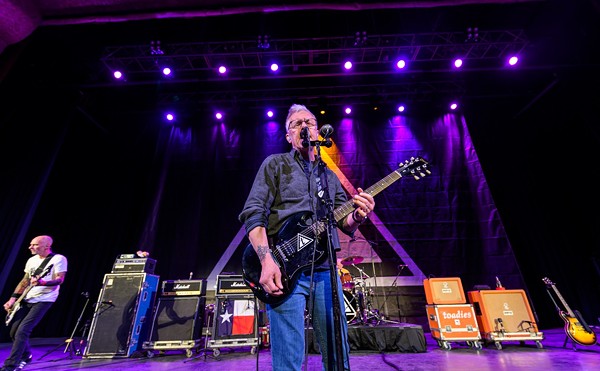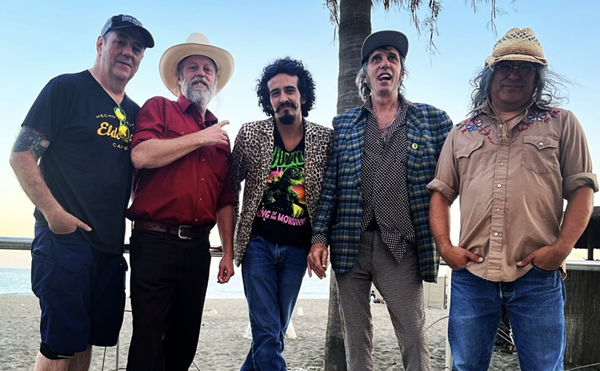Hip-hop is old enough for long-time fans to be nostalgic about the days when it was just becoming a nationwide phenomenon, and that sentiment has manifested itself in a spate of recent records and books. From the deluxe reissue of one of rap's first crossover successes (and one of the genre's true masterpieces), De La Soul's 3 Feet High and Rising, to the '80s club resurrectionism of King Britt's Sylk 130 project, it is easy to see the diverse roots of rap's whimsical side. (Some other key reissues, like Rhino's Sugar Hill Records box set, have been out for some time.)
Another portrait is painted by a recent series of Tommy Boy reissues that shows where the rap/pop border stood in the early and mid '80s. Planet Patrol and the Jonzun Crew, for instance, use a lot of hip-hop beats but lean more toward synth-funk, with the latter filling their album with vocoder-produced "space vocals" reminiscent of Midnight Star's "Freak-A-Zoid." Stetasonic, on the other hand, was one of the first rap acts to employ a live band.
Tommy Boy's biggest claim to cred came in the form of a man named after a continent. Afrika Bambaataa, one of the Bronx's most influential DJs, is anthologized on the label's Looking for the Perfect Beat. Using a variety of backup crews such as Soul Sonic Force and the Zulu Nation Cosmic Force, Bambaataa burned himself into the consciousness of hip-hop's first generation. The "Native Tongues" collective (an umbrella covering groups such as De La Soul and A Tribe Called Quest) has been especially vocal in their gratitude.
But music is only one aspect of hip-hop culture. Throughout the '80s, photographer Jamel Shabazz was busy documenting another side. Roaming the streets of Brooklyn with his first 35mm camera, he photographed the city's black and Latin youth.
| Back in the Days Photographs by Jamel Shabazz powerHouse Books $35, 128 pages ISBN: 1576871061 Tommy Boy 20th Anniversary Series Various Artists (CDs, Tommy Boy Music) |
Though Shabazz' impulse was largely a documentary one, he was too much a part of this culture to view it through the dispassionate lens of photojournalism. Instead, his work is street portraiture; rather than hunting unsuspecting subjects and catching them in candid shots, he approached them cautiously and asked permission. If the subject balked, the young man had a handy album of previous work to convince them that he wasn't out to exploit anybody. In Shabazz' world, the camera is completely at the service of the person in the frame.
Make that the persona in the frame. As much as any self-aggrandizing rap lyric, the most entertaining photos here capture an idealized self-image, a pose crafted for strangers' consumption, a mask and costume of cool. A quartet of red-clad pre-teens imitates a rap group stance, forming a human backdrop for their ringleader, who crouches, like "The Thinker," before them. Older groups of teens tend to lean back, arms folded, with mock menace on their faces. Happy couples face the camera while wrapped in each other's arms.
Fashion is king: It is an era of huge, square glasses with monograms in the corner; of Kangol and Adidas; of conspicuous gold chains. The artist remembers a power outage in the late '70s that led to mass looting — in the months that followed, a mysterious wardrobe upgrade was seen in the neighborhood, with some clothes-horses going home twice a day to change into a new outfit.
Every stance here is informed by poses seen in music and style magazines, but the faces that address Shabazz reveal a depth of self-awareness you don't get in standard issue copycats. These people are inventing the styles the glossies are glamorizing, just as their contemporaries are creating a musical form that will rival rock 'n' roll. The clothes are off the rack, but the poise can't be bought — even if a hundred companies have become rich claiming to have it for sale. Though the men and women in this book never got paid for the "lifestyle" they invented, the fun they had in its creation sneaks off the pages. Before the suburb-raised gangstas who believed their own hype, a lot these city dwellers struck an aggressive pose ... and smiled.

















